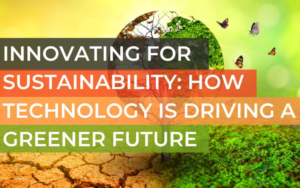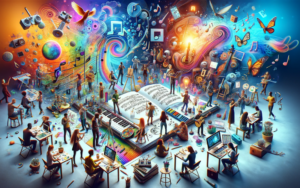Welcome to the dawn of a new era in the workplace – the era of the Augmented Connected Workforce (ACW). As we bid farewell to isolated information and limited communication, we open our arms to a future where collaboration is not just a necessity, but an art form. The ACW, with its innovative technologies, is set to redefine our workspaces, making them more efficient, productive, and exciting than ever before.
The seismic shift in the world of work is being led by the ACW. This revolutionary concept is all about harnessing the power of technology to boost, enable, and transform our collaborative efforts, unlocking levels of efficiency and productivity that were once thought impossible.
Picture this – a workspace where:
- Augmented reality (AR) provides real-time instructions and data on physical equipment, making complex tasks a breeze for technicians.
- Connected devices share information and updates seamlessly, ensuring everyone is on the same page, no matter where they are.
- Collaborative platforms eliminate communication barriers, facilitating real-time interaction across teams and departments.
- Artificial intelligence (AI) sifts through data and offers personalized insights, optimizing workflows and predicting potential issues before they arise.
This is the ACW in action. It’s about using technology as a catalyst, amplifying human capabilities and ushering in a new age of hyper-connected collaboration.
The ACW revolution is being driven by several key technologies:
- AR and mixed reality (MR): These immersive technologies superimpose digital information onto the physical world, providing intuitive guidance for training, maintenance, and remote assistance.
- Internet of Things (IoT): A network of connected devices that collect and share real-time data, offering crucial insights and enabling automation.
- AI and machine learning (ML): These smart systems analyze data to identify patterns, predict outcomes, and personalize recommendations, optimizing workflows and decision-making.
- Collaborative platforms: These digital hubs serve as a central space for communication, file sharing, and project management, fostering seamless collaboration across teams.
- Exoskeletons and wearables: These physical technologies enhance human capabilities, reducing fatigue and improving worker safety and efficiency.
The ACW brings a host of benefits for both individuals and organizations:
- Increased productivity: Real-time information, streamlined workflows, and AI-powered insights lead to faster task completion and improved overall efficiency.
- Enhanced collaboration: By breaking down communication barriers and fostering real-time interaction, team dynamics are strengthened, leading to better problem-solving.
- Improved safety: AR-guided procedures, wearables, and connected devices contribute to a safer work environment, reducing injuries and accidents.
- Reduced costs: Optimized workflows, streamlined communication, and predictive maintenance minimize costs and resource waste.
- Empowered workforce: Technology augments human capabilities, providing workers with the tools and information they need to excel.
However, the ACW also presents potential challenges:
- Cost and implementation: These technologies require investment and careful planning for implementation.
- Cybersecurity concerns: The use of connected devices and data sharing necessitates robust cybersecurity measures.
- Ethical considerations: The use of AI and data analysis raises questions about privacy and bias.
- Employee training and adoption: Successful implementation requires effective training and change management strategies.
Conclusion:
The ACW is not merely a technological trend; it’s a paradigm shift in how we work. As we navigate this exciting landscape, we must remember that the future of work is not just about being connected – it’s about being augmented, empowered, and revolutionized. Welcome to the future of work, welcome to the era of the Augmented Connected Workforce.





